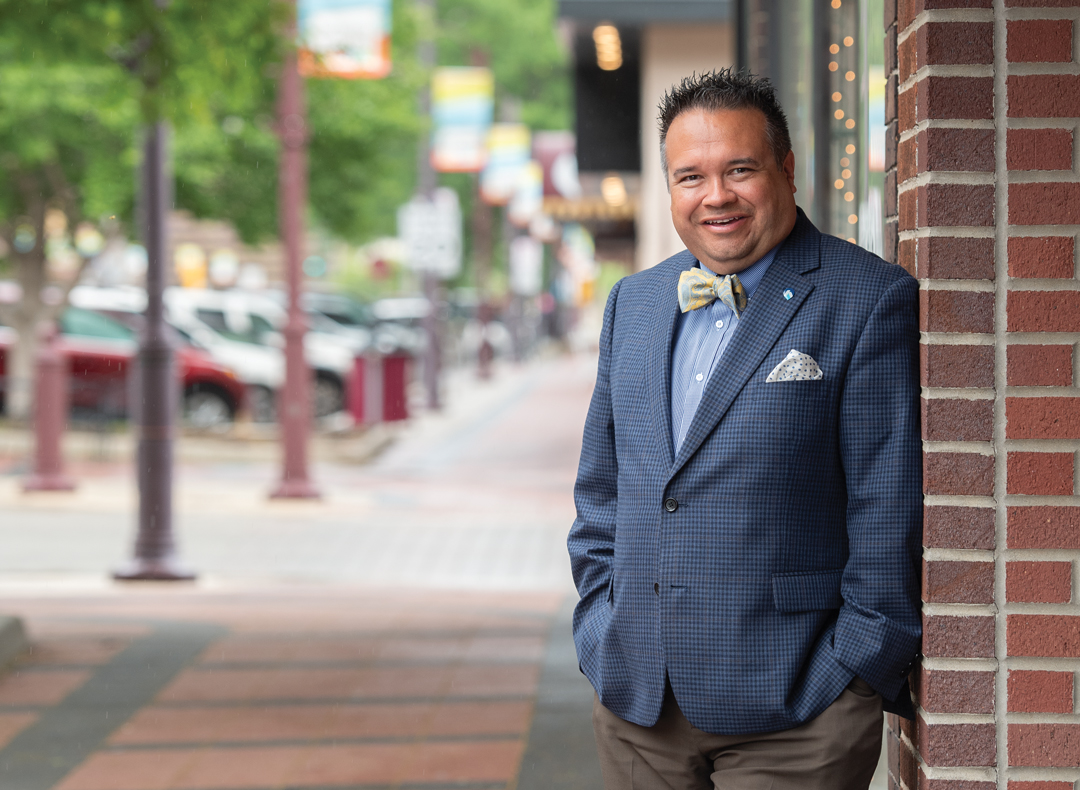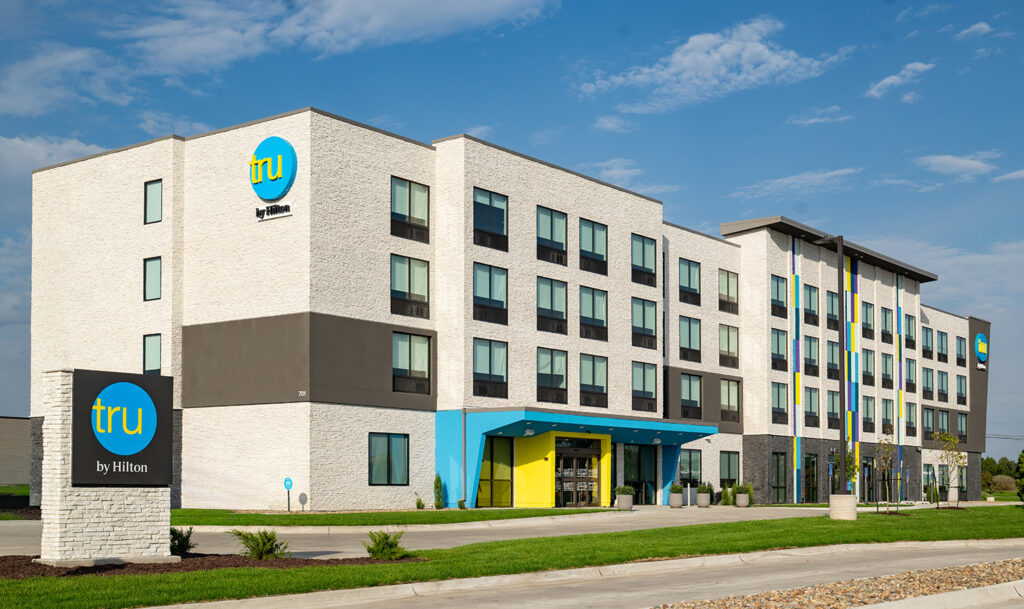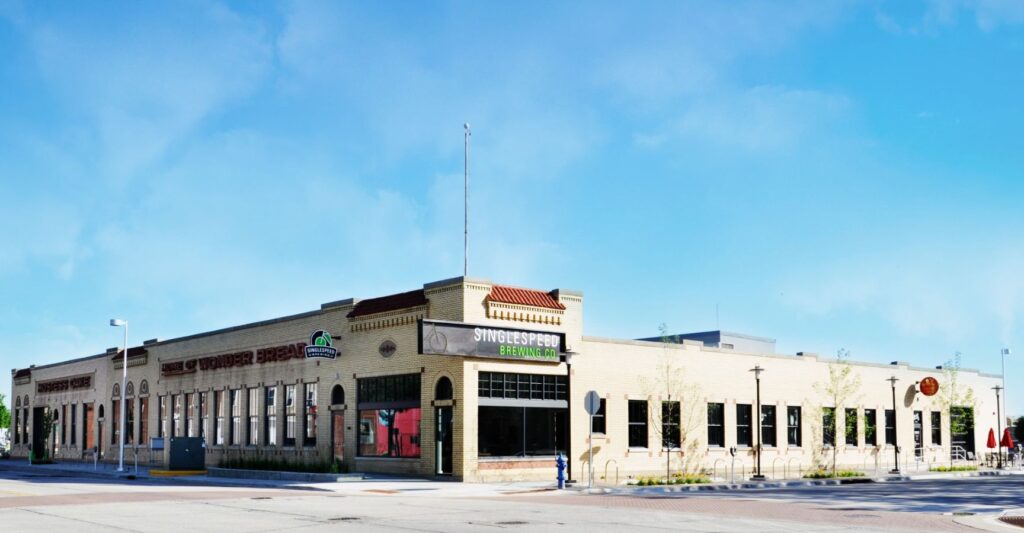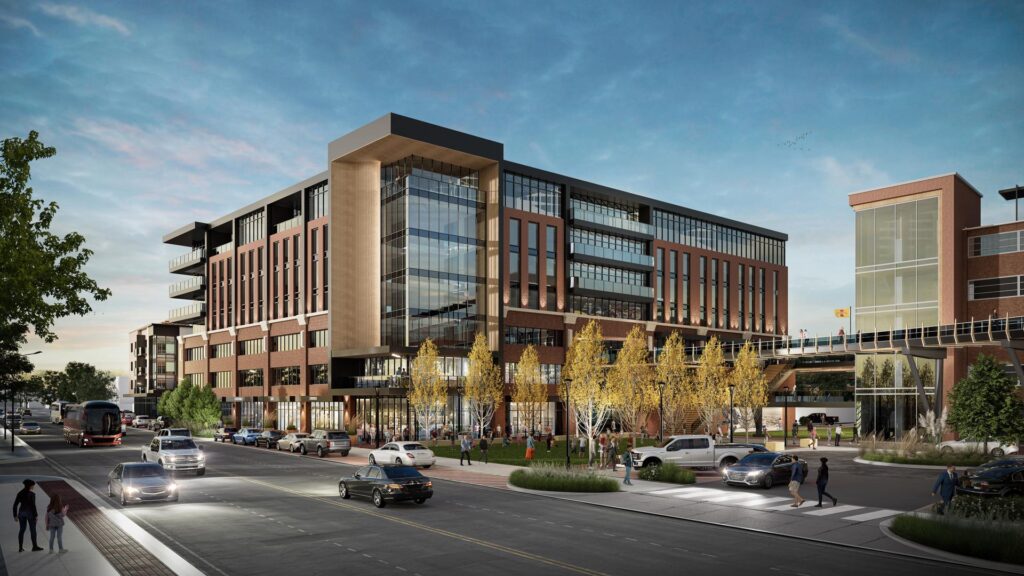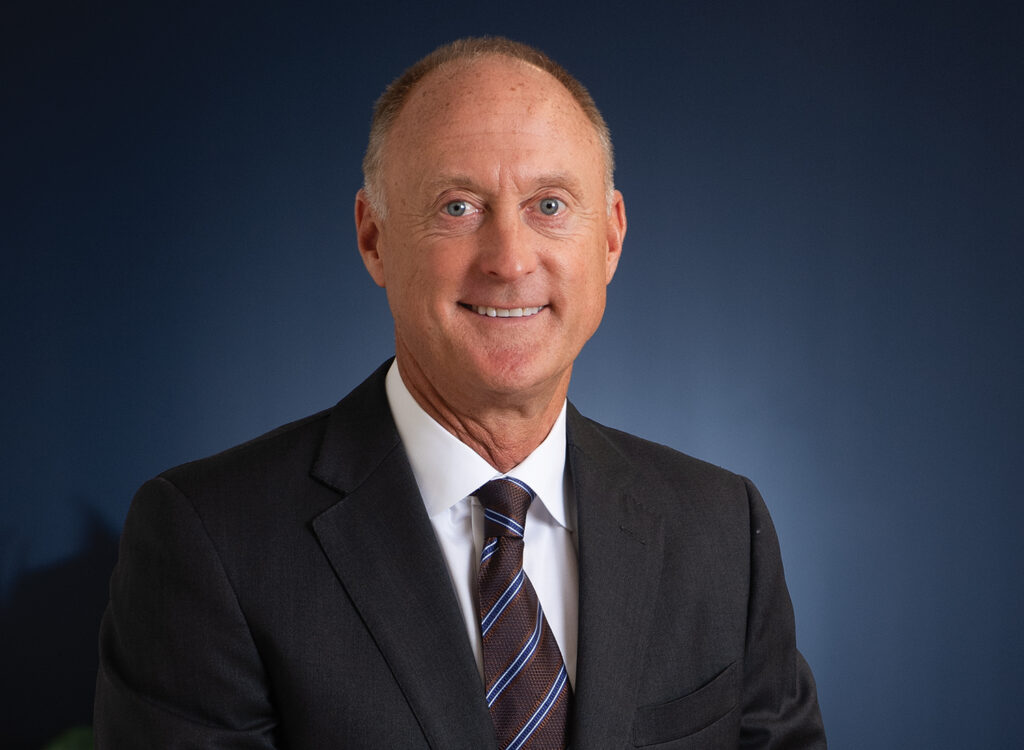Ames looks to take already vibrant downtown to the next level

Michael Crumb Jun 6, 2025 | 6:00 am
10 min read time
2,303 wordsBusiness Record Insider, Real Estate and DevelopmentAmes is undertaking a revamp of its downtown, hoping to take what leaders say is an already vibrant district to the next level.
The downtown vision plan put together by Ames Main Street and signed off on by the city council is a working document that is the result of several years of work, said Travis Toliver, vice president and executive director of Ames Main Street.
The goal? To expand housing opportunities and create an 18-hour district with more entertainment and restaurant options, with extended hours for downtown businesses.
It all began about four to five years ago as a conversation among one of the organization’s committees. That conversation expanded to include downtown businesses and eventually the community.
“There was this underlying current that downtown Ames is already a fantastic place. How do we take that to the next level?” Toliver said.
Ames Main Street hired Bolton & Menk, a Minneapolis-based engineering and design firm, which developed what Toliver said is a concept plan for the future of downtown Ames.
With that in hand, meetings were held with small focus groups and stakeholders, including Iowa State University.
“We wanted to get a vibe of what downtown means to you, where do you see it in the next 10 to 15 years?” Toliver said. “What don’t we have that you have to leave town for?”
Information from those conversations were put into a community survey, which received nearly 1,000 responses.
What emerged, Toliver said, were four big ideas that the plan should be built on. Those included the building of a robust neighborhood downtown, he said.
The big four
Housing will be key to the growth of downtown Ames, Toliver said.
“What we have learned is that on average, 5% of a community’s population lives downtown. If you look at the full-time population of Ames [just over 30,000 not including college students] that would be about 1,500 people living downtown. We only have maybe 200 or 300 living downtown right now,” he said.
The plan looks at the area between Duff and Grand avenues to the east and west and from Lincoln Way to Sixth Street, to the south and north.
“So we look at, ‘How do we create more urban living downtown?’” Toliver said.
The city already has the infrastructure in place to accommodate downtown living, he said.
There are parks, an art center, a public library, city hall, a post office, a museum and a grocery store.
“We have all these things that make living downtown very accessible and very easy,” Toliver said. “We just don’t have the living units. So the plan addresses possible mixed-use, commercial and residential opportunities for developers to take a look at.”
The plan also looks at how to create more space along the streets for business and public use. Things like outdoor dining are addressed in the plan.
Toliver said Della Viti, a wine bar along Main Street, generates an additional $20,000 a year from its small seating area it has along the sidewalk in front of its business.
“So imagine what a Sweet Caroline’s or Aunt Maude’s or Cornbred could do,” Toliver said, naming a few of Ames’ popular downtown restaurants.
“We’re looking at how we can open more opportunities for more spaces for those businesses, but also maybe a space where we could have a pop-up vendor or space where there could be some kind of activity for the public to engage with,” he said.
There are also talks about extending public space between downtown parks by closing streets during events to expand those areas and creating more pedestrian friendly areas, he said.
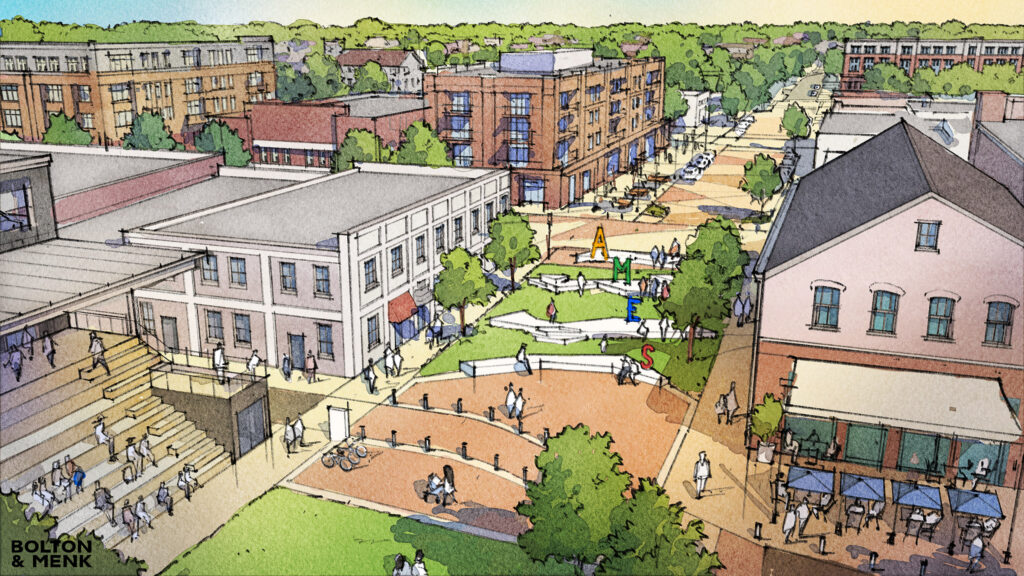
The plan also looks at creating incubator space for entrepreneurs.
“Can we create an environment where downtown is an inviting place for entrepreneurs to come and test their business model, get them out of their basements and garages and see if we can create some incubator space, some short-term lease space where we can invite entrepreneurs to come in?” Toliver said.
The last cog of the plan is creating better engagement with Iowa State University, he said.
That could include ISU having a presence downtown, whether that be classes, an off-campus lab or other program to help connect downtown with the university and draw more students and faculty to the area, Toliver said.
Toliver said he sees the vision plan as “step one.” Ames Main Street will eventually look at expanding the geographic boundaries of downtown to create a city center concept where downtown is the core of the development.
Leaders will also look to see if downtown Ames can qualify for various designations to help with grant funding, Toliver said.
Partnering with the city

Kelly Diekmann, planning and housing director for the city of Ames, said the goal of the vision plan is to see what downtown could be.
“Is there more potential downtown than what we see today?” he said. “We all recognize the small business nature of Main Street. Having full tenant space is great. Not every downtown in Iowa has that and that is key, so the city council in partnership with Ames Main Street wanted to get a more complete idea of what Main Street interests are.”
Diekmann said it’s difficult for the city to respond to ideas as they pop up year to year.
“So we were interested in what the ideas [for] the downtown are and see how they align with our long range plan and see where there was synergy between private actions and potentially public actions to reinforce the downtown and potentially expand the types of uses and activities,” he said.
Diekmann said adding housing is a good thing because besides increasing retail sales it can add a different element to downtown and maybe encourage other businesses to locate there.
“We think it makes downtown a more robust district,” he said. “We think adding housing hits a mark for us.”
Diekmann emphasized that the vision plan is a concept and not a “recipe for implementation.”
“It is truly, here are some of the biggest ideas we can come up with that seem feasible, this is what we could see happening downtown and then try to have a step of implementation,” he said.
One of the big-picture things Diekmann referred to was building a parking garage. But that is not a short-term project, he said.
“There are a lot of steps to designing and deciding how to fund that,” he said.
Part of the discussion is how existing buildings get redeveloped and what that reinvestment looks like, Diekmann said.
“We wouldn’t expect Main Street businesses to shoulder major infrastructure projects, but we also need alignment, and this vision is trying to create alignment of interests between business owners and city investment. I think as a vision document, it does highlight a lot of things that could change and things that could enhance the community, but it isn’t a commitment to do any of those things,” he said.
The next step, Diekmann said, is the creation of a taskforce to prioritize ideas contained in the plan and identify what should be undertaken by the business community and what would be advocated to the city council.
Diekmann said that from a city planner’s perspective, it’s helpful to have a centralized source of ideas to work from.
“As a city, trying to react to a great idea every year is impossible,” he said. “So, getting them all on the table, having some kind of structure to why you would do something, it’s pretty exciting. We all know downtown is beloved. We know it’s thriving. What can continue its success or make it even better, that is exciting.”
Thoughts of a business owner

Ellyn Grimm and Amanda Lepper opened the independent bookstore Dog-Eared Books on Ames’ Main Street in 2021. Being long-time Ames residents and Ames High School graduates, they had an appreciation for their hometown and what downtown could offer.
“We felt like it had the atmosphere, the vibe we were going for,” Grimm said. “It had the foot traffic, so for us, we never really considered anywhere else.”
Today, Grimm also serves as chair of the Ames Main Street board.
Having spent the past 30 years in Ames, she acknowledges that downtown Ames hasn’t always been the vibrant place it is today.
“This is a relatively recent development,” Grimm said. “I think it shows that there is something here worth investing in, that we have traction. There is something here that is attracting people to our community and to this space.”
Undertaking the downtown vision plan isn’t reinventing the wheel, she said.
“We’re taking all the things that are doing really well for us and we want to elevate them and make them even better,” Grimm said. “I think it’s showing that this district is worthy of that investment and that it can support that investment.”
She said she’s most excited about the idea to expand downtown beyond Main Street, and finding new uses for outdoor spaces for business and entertainment.
Wider sidewalks are also appealing, Grimm said.
“Our sidewalks are pretty narrow and I think of lots of other downtowns and they have these wide sidewalks,” she said. “I think we have the foot traffic, but we have narrow sidewalks.”
She said there isn’t space for outdoor seating at downtown restaurants or coffee shops, and because of that, opportunities are being missed.
“I think about all the opportunities to grow all those special things by creating more space for them.”
An outsider’s perspective
Ames leaders traveled to Fargo, N.D., last fall to see what the city of about 134,000 has done with its downtown. Adding in neighboring communities of Moorhead, Minn., and West Fargo, the population jumps to 250,000. That does not include the 30,000 North Dakota State University students who call the area home.

Mike Allmendinger, president of Kilbourne Group, a firm involved in the redevelopment of Fargo’s downtown over the past 25 years, said Fargo created its first master plan for its downtown in the late 1990s. The state then created policies with incentives for developers to tackle redevelopment of historic buildings and do infill projects downtown.
“At the time there were very few cars parked on the street, there were vacant buildings, and if there were retail tenants on the first floor, most likely the building was vacant on the upper floors,” Allmendinger said.
And there were a lot of surface parking lots, he said.
Over the years, Kilbourne Group and other developers got to work renovating buildings and getting them occupied. Then came work to convert some of the surface parking into space for construction of new buildings, Allmendinger said.
To accommodate parking that was lost to that construction, parking garages were built that provide about 1,800 parking stalls, he said.
Although there have been improvements and downtown Fargo is a more vibrant destination today than it was 25 years ago, work continues, Allmendinger said.
“It’s an evolution,” he said. “In 2000, projects were smaller with their renovations. We renovated a few buildings that had 30 units in them. And now the mark is more evolved and we’re building projects that have 100 or 150 units in them. There’s less projects but they’re larger projects.”
Allmendinger said it’s important for a community that is beginning the downtown visioning process to understand the market opportunity. That includes watching growth patterns and how many people are moving in.
Fargo, the largest city in the state, has a diverse economy with strong agricultural, health care and construction sectors, he said.
Watching growth patterns is important because some will build single family homes, others will build multi-family and some may rent.
“I think knowing your market is a key component,” Allmendinger said. “If you just plan on getting people who live in the suburbs to move downtown, that’s a different strategy. If you don’t have good growth, that’s a different strategy. I think the key component to look at is related to housing. Housing is essential for businesses to be viable Monday through Friday. Having a local community living downtown impacts the type of businesses you’re going to get downtown as well.”
Allmendinger said street design needs to be key to any downtown vision plan.
“There’s two components. One is the long-term plan for all the streets, but also when redevelopment happens, when do the sidewalks and streetscapes get updates?” he said.
Design elements like landscaping, signage, benches and lighting are critical, as well as timing improvements so that they don’t interfere with access to a business, he said.
He also recommends that a community recruit entrepreneurs and support them with financial incentives to get their business off the ground.
“There’s a lot of risk for someone to open a business downtown, but that is where the magic happens,” Allmendinger said. “It’s where people can visit and have an experience that they can’t have anywhere else. That’s where you build community because people want to gather around unique experiences and create memories.”
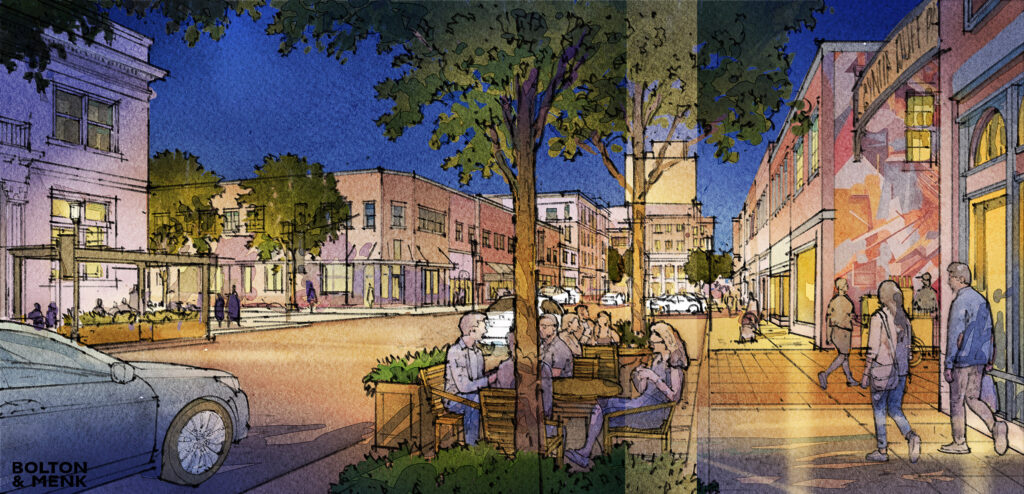
Dreaming big
For Toliver, the leader of Ames Main Street, the sky should be the limit for what downtown Ames could be.
“I told Bolton & Menk let’s shoot for the Taj Mahal and see where we end up,” he said. “I would like this project to be not only the starting point for making downtown Ames a destination of choice in Central Iowa, but also looking at how do we grow from there.
“I think we’re on the precipice of something great. We just need to get there.”

Michael Crumb
Michael Crumb is a senior staff writer at Business Record. He covers real estate and development and transportation.

